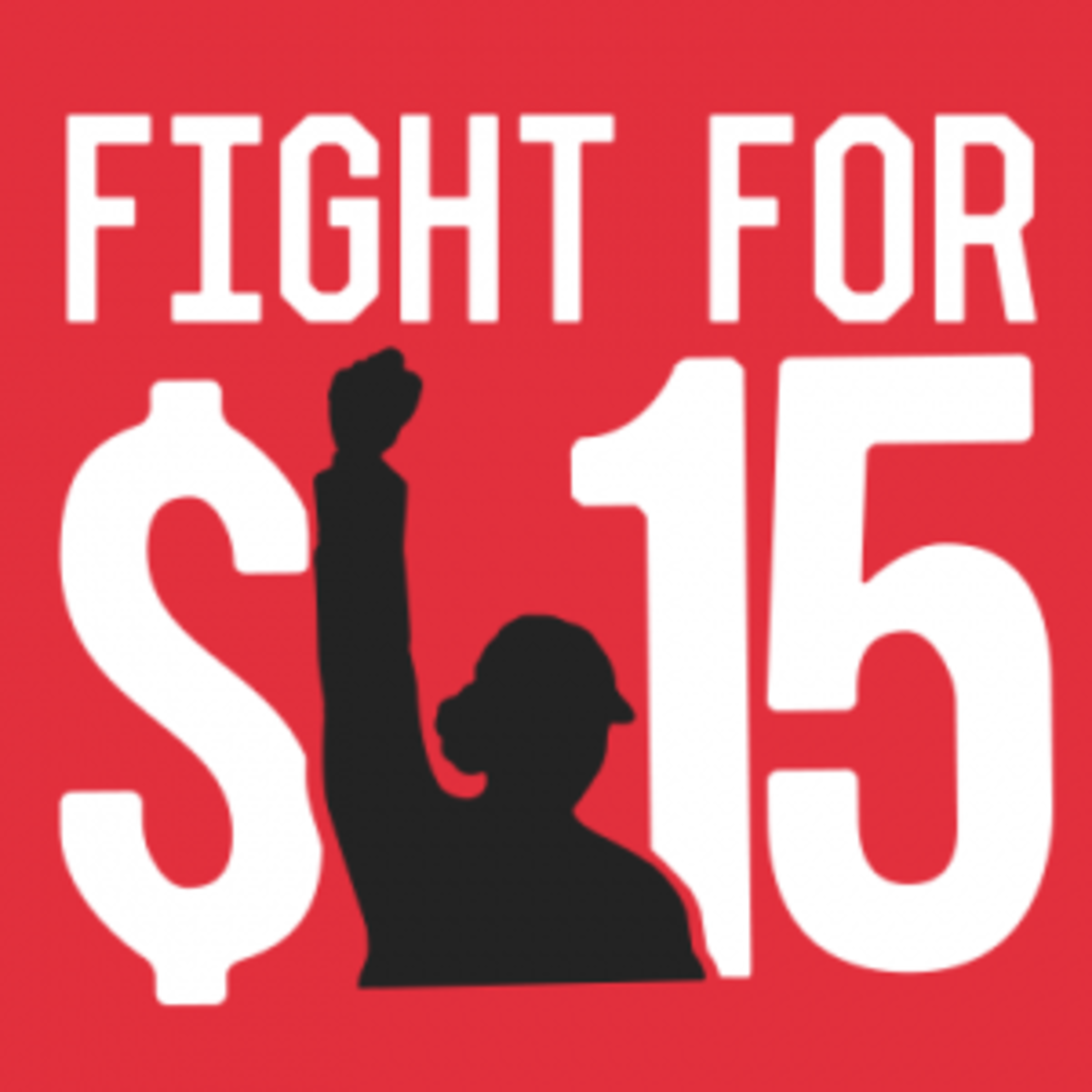Why $15 an Hour
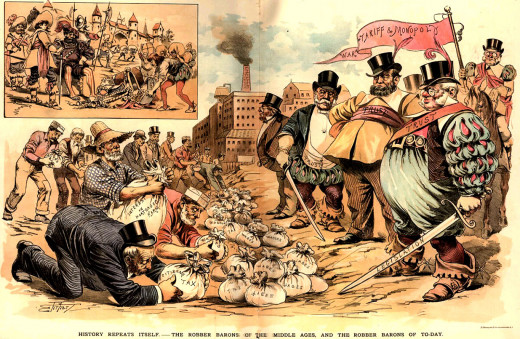
At one time, many people dismissed the idea of a minimum wage. It wasn't an idea they considered. People worked without considering that they had a say over wages. Certainly, there had been farm rebellions and other unrest over labor, slave riots for example, but workers in corporations of the newly industrializing United States had limited choices.
Workers finally learned about their power with the arrival of labor centric economic and political theory in the 19th Century along with the rise of unions. Workers also learned through their work experience that small businesses and large corporations would pay them as little as possible as long as the workers didn't starve. Workers were dependent on employers for the survival wages paid them. Workers finally demanded a change.
When corporations became major employers in the nation, with their company towns, sweat shops, sixty-hour plus weeks, twelve-plus hour days, dangerous work places and other abusive working conditions, the workers demanded more, including a minimum wage. There was a struggle ahead of them, for even if most of the people demanded a minimum wage, the corporations, the politicians and the courts were against them.
Today, minimum wage is part of the labor market, but many people react in disbelief and shock to the idea of a $15 minimum wage as they did to the basic minimum wage 100 years ago. Here are some facts about the minimum wage and the $15 an hour wage to demonstrate that it's not only sane, it's worth supporting.
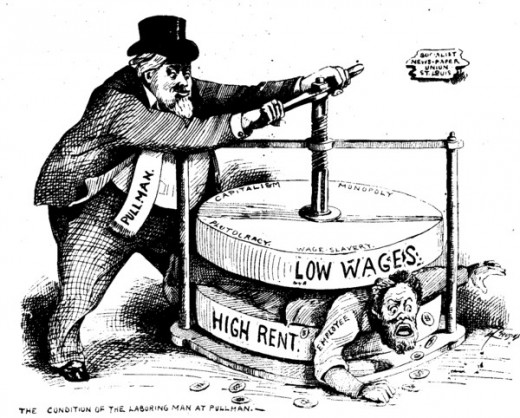
The minimum wage was first rejected by the U.S. Supreme Court in the early 1900s when laws were passed to raise it. In cases such as Hammer v. Dagenhart (1918) and Adkins v. Children’s Hospital, the Supreme Court sided with businesses against child labor and minimum wage laws. One of the most egregious court decisions was Tipaldo v. Morehead (1936), “The manager of a Brooklyn, N.Y., laundry, Tipaldo had been paying nine laundry women only $10 a week, in violation of the New York State minimum wage law. When forced to pay his workers $14.88, Tipaldo coerced them to kick back the difference. When Tipaldo was jailed on charges of violating the State law, forgery, and conspiracy, his lawyers sought a writ of habeas corpus on grounds the New York law was unconstitutional. The Supreme Court, by a 5-to-4 majority voided the law as a violation of liberty of contract.11” It wasn’t until 1938 and the passage of the Fair Labor Standards Act that the court upheld the minimum wage.
Many people have been convinced that a raise in the minimum wage will mean a dramatic loss of overall jobs. That has been sold to the public ever since the minimum wage was passed in 1938. However, evidence shows that a slight rise in the minimum wage, .50 cents to a dollar, has no to little impact on employment. Even a higher increase leads to fewer loses than the dire prognostication of pundits such as Tim Worstall of Forbes Magazine.
Fighting against a raise in the minimum wage is the work of lobbying groups “…including the U.S. Chamber of Commerce, the National Restaurant Association and the National Federation of Independent Business…” Here’s a fear-mongering video with corrections added as an example of the propaganda against a higher wage.
MinimumWage.com is a front group operated by Berman & Co. Berman & Co. operates a network of dozens of front groups, attack-dog web sites, and alleged think tanks that work to counteract minimum wage campaigns, keep wages low for restaurant workers, and block legislation on food safety, secondhand cigarette smoke, drunk driving, and more
MinimumWage.com describes itself as "a project of the Employment Policies Institute (EPI)," another Berman front group that was created to "argue the importance of minimum wage jobs for the poor and uneducated."[1][2] However, Berman and his Employment Policy Institute have been leaders in a national campaign against the minimum wage, that includes TV ads, print ads, op-ed in state newspapers and more.[3]
According to Citizens for Responsibility and Ethics in Washington, MinimumWage.com "opposes all federal, state, and local efforts to raise the minimum wage, and promotes misinformation about the consequences of minimum-wage increases."[4]
The fortune teller in the video says the CBO predicts "1 million jobs will be lost." The actual report from the neoliberal, capitalism promoting organization, the CBO, says 500,000 jobs will be lost. And that is if the minimum wage goes directly to $10.10 and not in stages. The CBO report also states that it would lift 900,000 families out of poverty. That would lead to a reduction of welfare costs and an increase in consumer spending that may, or may not, lead to less unemployment due to consumer spending. However, none of the positive CBO news about a $10.10 minimum wage is in the video. The video is about as truthful and accurate as a...fortune teller.
Interestingly, Forbes estimates that 300,000 jobs would be lost if the wage were raised to $15 an hour. The MinimumWage.com video says 1 million jobs will be lost at $10.10, the CBO reports says 500,000. Perhaps if we raise the wage to $20 an hour there would only be a loss of 100,000 jobs. Clearly, we don’t know the impact of job losses by raising a minimum wage until we do it. We do know, however, that a higher minimum wage will get people off public assistance and out of poverty.
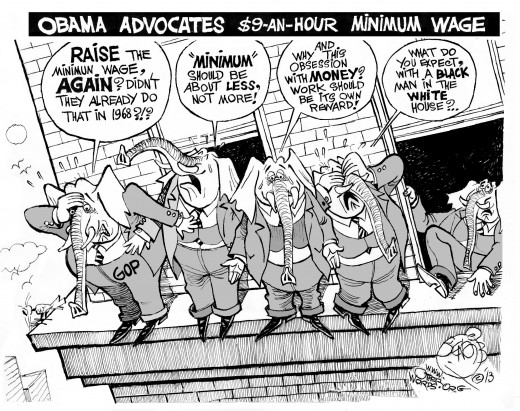
The influential neoconservative, pro-business think-tank American Enterprise Institute (AEI) warns us about the “1,300 job loss” in Seattle restaurants between January and June of this year and implies that the cause is the rise in the minimum wage there to $11 and hour. (The wage won’t go up to $15 until 2017.) First, their report looks at “January to June job losses” and the minimum wage didn’t go up to $11 until April 1st, only three of those months. Remember, there is always a loss of jobs in January after the Christmas season, but the wage increase hadn’t occurred yet. Next, they point out the correlation with a rise in the wage, but they show no causal link between the rise in the wage and job loses in this report.
Is there another reason restaurants have lost jobs? Have jobs picked up in other industries? What is the net job loss? What effect does this have on welfare payments in Seattle? Did mechanization of food service jobs reduce the labor force? How many layoffs were due to fear of the higher wage and not economic necessity? Were the jobs possibly outside of Seattle at the SeaTac airport? Their report doesn’t address these issues well if at all.
Clearly, there is no hard evidence that shows the raise to $11 an hour for three months lead to the reduction in jobs. And, as all wages rise, more people will be able to afford the slight increase in food costs. Studies that predict job loses seldom deal with the affects of increased consumer spending.
This just in:
"The U.S. Bureau of Labor Statistics is now reporting that restaurants in Seattle have just posted their largest overall jobs gain in history with more than 2,500 jobs added in the last month, as well as an overall two month gain of more than 3,700 jobs." So much for the hard evidence against a raise in the minimum wage. Of course, a few months is just a sampling, not a trend, unlike what the AEI implied in their story.
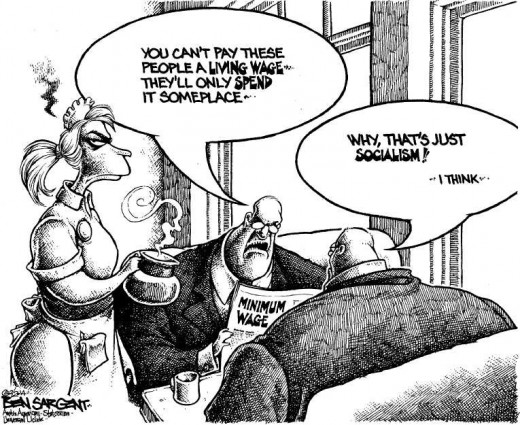
Another commonly stated myth is that the minimum wage is only for teenagers. In fact, 88% of those getting paid a minimum wage are over 20 years old. Besides, teenagers spend a higher portion of their income than adults, so if they earned more, more money would flow back into the economy.
A review of some “64 studies on minimum wage increases found no discernible effect on employment.” Moreover, 600 economists and seven nobel prize winners, “have signed onto a letter in support of raising the minimum wage to $10.10 by 2016.” Another survey found that “3 out of 5 small business owners support increasing the minimum wage to $10.10.” (ibid)
Moreover, a raise in the minimum wage gets support from many businesses, “Raising wages reduces costly employee turnover and increases productivity. When the minimum wage goes up, employers can enjoy these benefits of paying higher wages without being placed at a competitive disadvantage, since all companies in their field are required to do the same. Raising wages also puts money in the hands of consumers, boosting demand for goods and services.” Clearly, not all businesses are against a higher minimum wage.
A Political Economy Research Institute (PERI) study finds that a rise in the minimum wage in the fast food industry is possible, “…we find that the fast-food industry could fully absorb these wage bill increases through a combination of turnover reductions; trend increases in sales growth; and modest annual price increases over the four-year period.” That is the same 4 year time-period for the Seattle $15 dollar wage to come into affect.
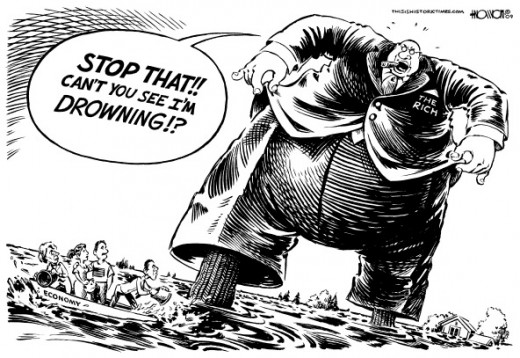
Some critics say restaurants will have job loses with the new wage, however, “Employers in San Francisco must pay tipped workers the full minimum wage of $10.74 per hour – before tips.” However, the Bureau of Labor Statistics reports that restaurants had a net job gain in 2014. Even when the minimum wage is raised, it has not shown to decrease real GDP per capita. (ibid) Moreover, a raise in the minimum wage has shown little affect on employment, positively and negatively, “Minimum wage increases have little to no negative effect on employment as shown in independent studies from economists across the country. Academic research also has shown that higher wages sharply reduce employee turnover which can reduce employment and training costs.” (ibid)
Even the birthplace of neoliberal economics, Chicago University, confirms the finding “…a 2013 survey by the University of Chicago’s Booth School of Business in which leading economists agreed by a nearly 4 to 1 margin that the benefits of raising and indexing the minimum wage outweigh the costs.”
Furthermore, a preponderance of studies show that a raise in the minimum wages has little affect in overall employment according to the Center for Economic Policy Research (CEPR), “The weight of that evidence points to little or no employment response to modest increases in the minimum wage.” That’s why the $15 minimum wage increase would be in incremental stages, not all at once like people believe.
In 1994, a study of neighboring states, New Jersey where there had been a recent minimum wage increase, and Pennsylvania, where there was no such increase, found “no evidence that the rise in New Jersey's minimum wage reduced employment at fast-food restaurants in the state.”
Another “…study...finds that a review of the minimum wage literature commonly cited by minimum wage opponents is flawed because it is subjective, relies in large part on studies of wage increases in foreign countries, and fails to consider the most sophisticated and recent minimum wage studies.”
Paul Krugman of Princeton University on February 2013, says that, in regards to the ‘natural experiments’ of raises in the minimum wage, “…the great preponderance of the evidence from these natural experiments points to little if any negative effect of minimum wage increases on employment.”
Most low wage workers work for large companies, contrary to what we are told by the media and politicians. Moreover, “There are significant savings that result from paying higher wages – including reduced employee turnover and increased productivity…”
In addition to worker morale and productivity, “Raising the minimum wage boosts consumer spending, generating higher sales revenue for local businesses and promoting economic growth.” In fact, it is estimated that a wage of $10.10 would increase economic activity by $30 billion and create 140,000 full time jobs. (ibid)
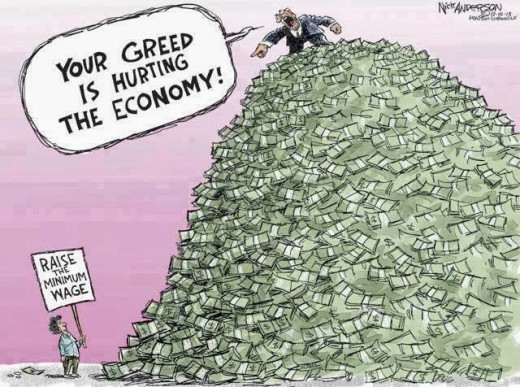
Why $15 an hour?
First, the minimum wage would be $10.90 if the wage had gone up with inflation. And workers need to eat, shelter themselves and pay other expenses that have gone up with or faster than inflation, such as education and health care costs. Second, the wage would be $21.72 if it had been linked to worker productivity. The wage of $15 an hour is almost directly in the middle and U.S. workers have earned it.
According to economist Robert Reich, “A $15/hour minimum won't result in major job losses because it would put money in the pockets of millions of low-wage workers who will spend it -- thereby giving working families and the overall economy a boost, and creating jobs. (When I was Labor Secretary in 1996 and we raised the minimum wage, business predicted millions of job losses; in fact, we had more job gains over the next four years than in any comparable period in American history.)” A natural experiment, not projections or predictions, shows that raising the minimum wage will boost GDP.
Anything less than $15 an hour would mean workers would have to receive welfare payments of some kind that taxpayers will pay for. If the goal is to get people off welfare, and low wages necessitates that workers receive government aid, then clearly it’s time for a living wage. Republicans and Democrats that fight an increase in the minimum wage and vow to cut welfare are working at cross purposes. Perhaps they want to put millions more people in the U.S. into poverty and onto the streets. Only then does keeping wages low and cutting welfare make sense.
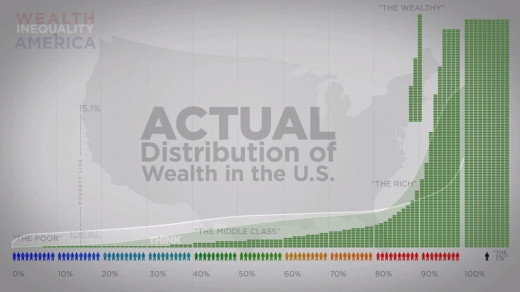
We can pay a few more cents for that hamburger or accept that more people in the U.S. will suffer in poverty and destitution without a wage increase. (The U.S. could also cut their bloated military budget of over $700 billion.) Low wage workers cost the nation $153 billion a year. This is a net loss of revenue that could be avoided by raising the minimum wage.
Fortune magazine mentions a Purdue University study that says, “the price of a $3.99 Big Mac would jump to $4.16” with a $15 minimum wage. That’s less than 20 cents. I think we can afford that. Moreover, “Raising wages to $15 an hour for limited-service restaurant employees would lead to an estimated 4.3 percent increase in prices at those restaurants, according to a recent study.”
The Motley Fool online states that Big Mac price would rise about 27 cents. And the Fool wisely warns us that the rising cost of the ingredients in that hamburger is what we really have to worry about, NOT a higher the minimum wage.
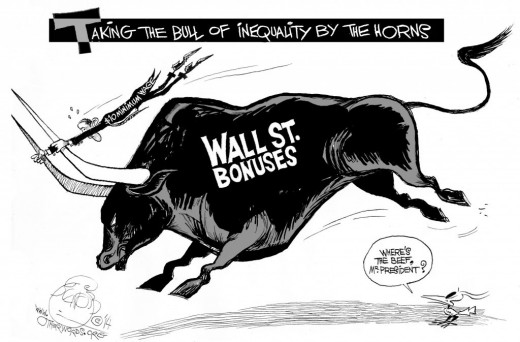
Clearly, research on minimum wage increases contradicts the predicted catastrophe we hear from neoliberals on television, in Congress and on the internet. Then again, businesses might raise the prices on burgers $1 to feign financial hardship in the face of the $15 minimum wage to increase their profits. Then they will announce, “See, I told you so.”
An important question that many anti-$15 wage sites and journalists ignore is how many workers make less than $15? While 4.2% of all workers make at or below the minimum wage, those that make less than $15: “Turns out it’s 42% of all U.S. workers.” That higher wage would have a positive affect on millions of workers and increase the spending capacity of workers in the nation by billions of dollars. Moreover, with higher wages there would be savings in Medicaid, TANF payments, SNAP payouts and other expenditures related to poverty.
Extrapolating from figures on the Wonkblog of the Washing Post, the $15 wage would end poverty for about 7 million Americans, about half of those in poverty today. It would save the nation $70 billion a year in unemployment benefits alone. Who doesn’t want to reduce poverty for millions if it didn’t have a heavy cost in jobs? A wage of $15 would be a living wage in many places across the U.S. Don’t we all want those that work full time, mainly adults, to be able to make a living and take care of their families?
People who are against a $15 minimum wage fail to address three things:
1. The $15 minimum wage would be implemented in stages and not all at once. It would not “double.”
2. The positive externalities, the increased spending, with a higher wage would increase demand and thus employment.
3. The literature, actual research, that states raising the minimum wage lead to few if any job loses.
Other Resources and Relevant Data:
- In 2015, total Walmart executive compensation was $76,021,636.
- The McDonald’s executive compensation was $20,283,371 last year.
http://insiders.morningstar.com/trading/executive-compensation.action?t=MCD
- At Yum! Brands (KFC, Pizza Hut, etc) the executive compensation was $30,558,288.
http://www.usatoday.com/story/money/business/2013/08/22/ten-largest-employers/2680249/- CEO pay in perspective
- State minimum wages
- Job Loss Myth of raising the minimum wage.
- Facts about the minimum wages
- Living Wage Calculator
So while the people and Congress fight over raising the minimum wage to $10.10, people go poor and executives, hedge fund managers and CEOs are raking in millions and paying a lower rate of taxes than most of those that work under them.
People should have a livable income. While it might hurt some billionaires, it’s best for the nation's people and economy.
Peace,
Tex Shelters

